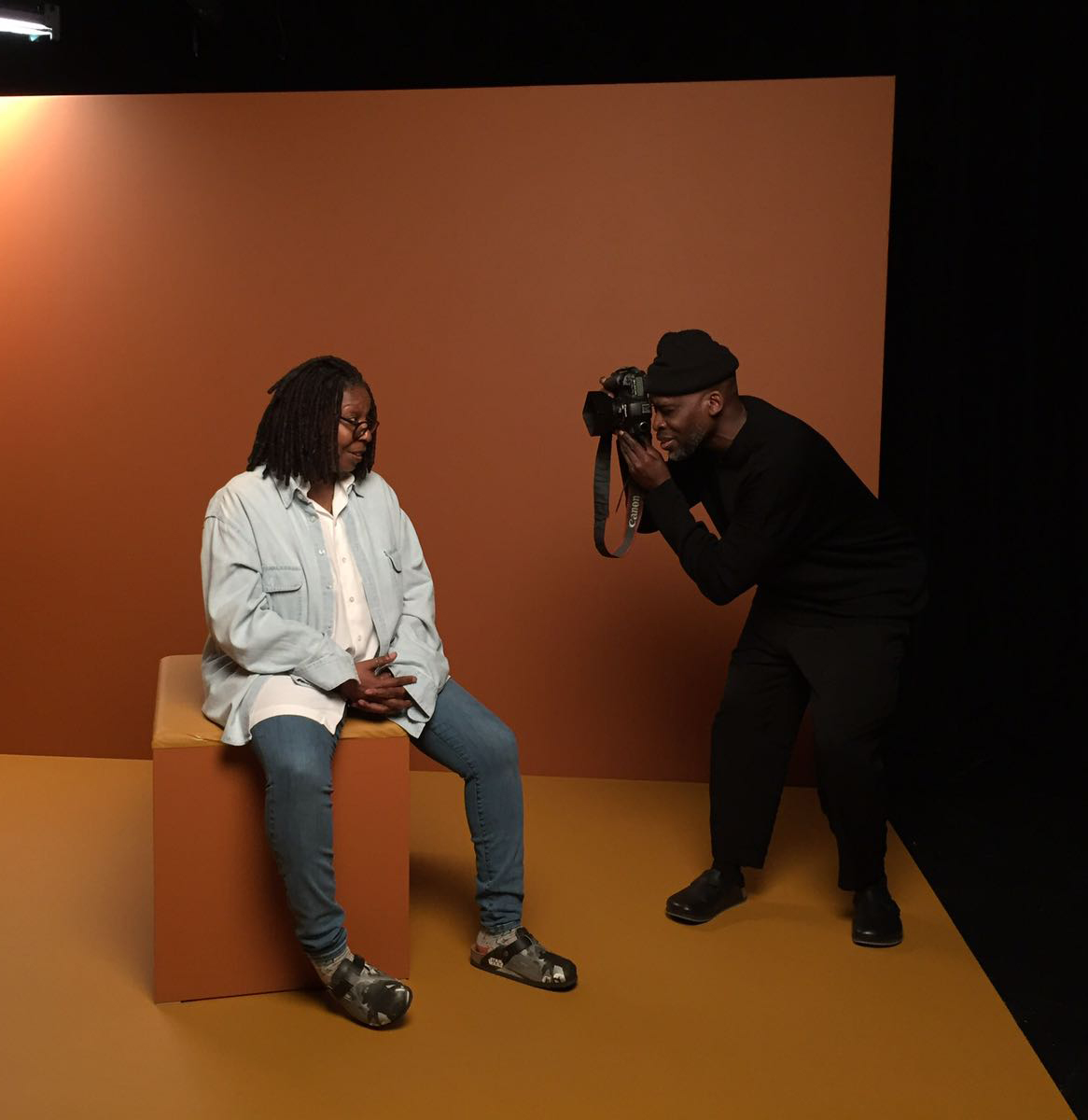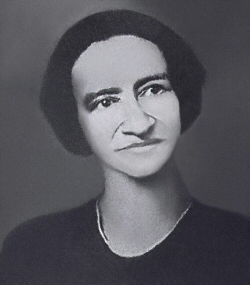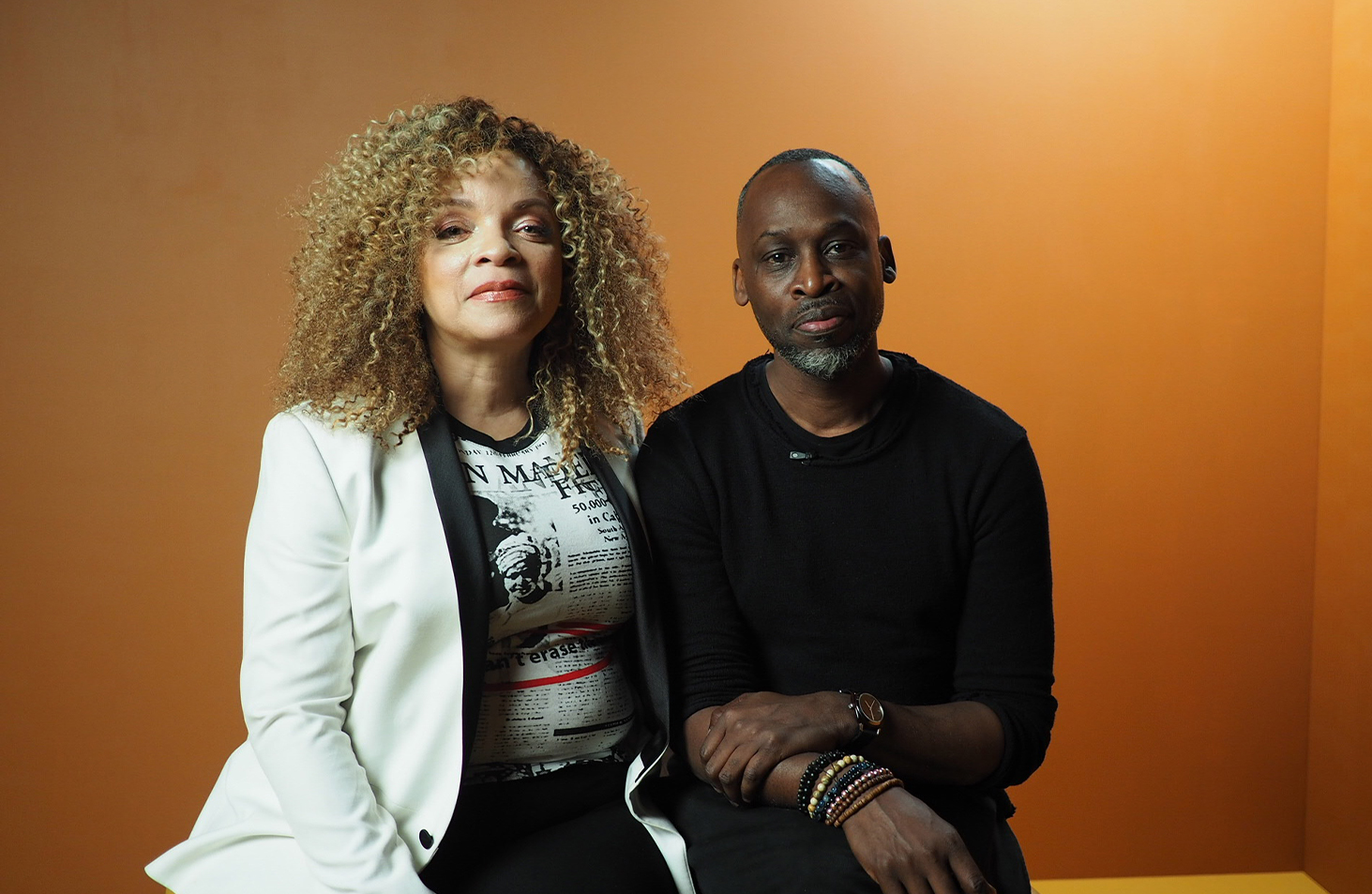They’ve Gotta Have Us:
A Learning Companion

Director Simon Frederick’s three-part docuseries They’ve Gotta Have Us (TGHU) tells the story of Black filmmakers who broke down barriers, took chances and beat the odds to create art that will last forever. Frederick interviews actors and filmmakers who give unfiltered insight on what it’s like to be Black in Hollywood.
Using this companion
Each section of the companion contains:
- Objectives
- Essential questions
- Learner activities
- Resources for self-reflection and deeper learning
- Explore the themes of representation, perspective and resistance
- Take action to improve institutions and systems based on their learnings
Diversity in front of the camera is not enough. It’s about who’s behind the scenes. It’s about who’s pulling the strings.”
Using this companion
Each section of the companion contains:
- Objectives
- Essential questions
- Learner activities
- Resources for self-reflection and deeper learning
- Explore the themes of representation, perspective and resistance
- Take action to improve institutions and systems based on their learnings
Diversity in front of the camera is not enough. It’s about who’s behind the scenes. It’s about who’s pulling the strings.”
That’s Not Me: Understanding Archetypes and Stereotypes
The themes of Lesson One are centered around representation in storytelling.
Participants will study how archetypes and stereotypes have impacted stories for generations.
Power to the People: Practicing Perspective in Media
The themes of Lesson Two examine the impact that images can have on audiences.
Participants will study the work of filmmaker and photographer Gordon Parks and then learn how to take photographs to inform their stories.
Build Your Own Table: Ownership as a Tool of Resistance
The themes of Lesson Three address self-representation and resistance in Hollywood.
Participants will create a podcast that allows them to shape their narrative.
“…the [film] catalogue suggests that their movement is ‘laughable’ and makes a point of describing a commanding officer on the wharf who, on the other hand, ‘struts’ and commands them to ‘hurry.’ Indeed, the polarities, here, across the porous boundaries of racial and ethnic difference, find themselves reflected in the very visual counterpoint of subject positions, whether between soldiers and officers, their explicit blackness and his implicit whiteness, their projected ‘inadequacies’ as troops and his projected confidence and capabilities. And all rendered from the fixed but flickering subject position of a chemically registered mechanical eye, whose very technology would be situated and consumed, arguably, as an outgrowth of this very racialized discourse of modernity, progress, speed, and movement.” – Dr. Dylan Robbins, New York University
Contrary to what most accounts of film history would have you believe, there has never been a time in American history when Black people haven’t been in front of the camera lens. The Black experience has been carefully documented through film and photography for over 125 years.
The end of the nineteenth century saw the invention of the movie camera and projector and gave audiences the first short films for public viewing, several of which featured Black people; Thomas Edison’s A Morning Bath (1896) and Watermelon Contest (1896) are two surviving examples.
This video, Colored Troops Disembarking (1898), captures the 24th U.S. Infantry, a Buffalo Soldier regiment, docking in Tampa, Florida, before continuing to fight in the Spanish-American War. Dr. Dylon Robbins, Director of the Center for Latin American and Caribbean Studies at New York University, explains that the silent film “depicts African-American soldiers descending a particularly steep plank, loaded with heavy backpacks and carrying rifles. One by one, they proceed with exceptional care, as the stationary camera observes them from solid, level ground.”
Even with an early entry into film during the silent era, for over a century, racist depictions in storytelling would continue to shape the ways the world would see and embrace Black people.
They’ve Gotta Have Us is a timely look at the impact of art, activism and race on Black cinema over three generations. This three-part docuseries features in-depth interviews with some of Hollywood’s most iconic voices, including Harry Belafonte, Diahann Carroll, John Singleton, Robert Townsend, David Oyelowo, John Boyega, Kasi Lemmons, Barry Jenkins and many more. The series was conceived, produced and directed by Simon Frederick, a U.K.-based, self-taught artist.
Opening with Moonlight‘s epic Best Picture Oscar win in 2017, Frederick’s series immediately pulls the audience into a rich tapestry of intrigue and uncertainty, chronicling the history of Black film and Black filmmakers on two continents and highlighting the problematic obstacle course of film development, production, distribution and exhibition.
Throughout this learning companion, users will explore the history of the movie industry through the lens of Black history while participating in activities rooted in representation, perspective and resistance in filmed media.
Contrary to what most accounts of film history would have you believe, there has never been a time in American history when Black people haven’t been in front of the camera lens. The Black experience has been carefully documented through film and photography for over 125 years.
The end of the nineteenth century saw the invention of the movie camera and projector and gave audiences the first short films for public viewing, several of which featured Black people; Thomas Edison’s A Morning Bath (1896) and Watermelon Contest (1896) are two surviving examples.
This video, Colored Troops Disembarking (1898), captures the 24th U.S. Infantry, a Buffalo Soldier regiment, docking in Tampa, Florida, before continuing to fight in the Spanish-American War. Dr. Dylon Robbins, Director of the Center for Latin American and Caribbean Studies at New York University, explains that the silent film “depicts African-American soldiers descending a particularly steep plank, loaded with heavy backpacks and carrying rifles. One by one, they proceed with exceptional care, as the stationary camera observes them from solid, level ground.”
“…the [film] catalog suggests that their movement is ‘laughable’ and makes a point of describing a commanding officer on the wharf who, on the other hand, ‘struts’ and commands them to ‘hurry.’ Indeed, the polarities, here, across the porous boundaries of racial and ethnic difference, find themselves reflected in the very visual counterpoint of subject positions, whether between soldiers and officers, their explicit blackness and his implicit whiteness, their projected ‘inadequacies’ as troops and his projected confidence and capabilities. And all rendered from the fixed but flickering subject position of a chemically registered mechanical eye, whose very technology would be situated and consumed, arguably, as an outgrowth of this very racialized discourse of modernity, progress, speed, and movement.” – Dr. Dylan Robbins, New York University
Even with an early entry into film during the silent era, for over a century, racist depictions in storytelling would continue to shape the ways the world would see and embrace Black people.
THEY’VE GOTTA HAVE US is a timely look at the impact of art, activism and race on Black cinema over three generations. This three-part docuseries features in-depth interviews with some of Hollywood’s most iconic voices, including Harry Belafonte, Diahann Carroll, John Singleton, Robert Townsend, David Oyelowo, John Boyega, Kasi Lemmons, Barry Jenkins and many more. The series was conceived, produced and directed by Simon Frederick, a U.K.-based, self-taught artist.
Opening with Moonlight‘s epic Best Picture Oscar win in 2017, Frederick’s series immediately pulls the audience into a rich tapestry of intrigue and uncertainty, chronicling the history of Black film and Black filmmakers on two continents and highlighting the problematic obstacle course of film development, production, distribution and exhibition.
Throughout this learning companion, users will explore the history of the movie industry through the lens of Black history while participating in activities rooted in representation, perspective and resistance in filmed media.
Early Acts of Resistance in Film and Photography
Before moving on to the first lesson, let’s check out a few Black pioneers in the film industry whose contributions have had a tremendous influence on the industry’s 125 year history.
Defying Stereotypes Using Photography
Click and watch as Dr. Henry Louis Gates Jr., Rhae Lynn Barnes of Princeton University and Chad Williams of Brandeis University highlight the importance of this disruptive exhibit which received more than 45 million visitors.
Defying Stereotypes Using Photography
When W.E.B. Du Bois presented “The Exhibit of American Negroes” at the 1900 World’s Fair in Paris, he brought with him an array of materials, including photographs, to defy Black stereotypes. Featuring over 500 “monochromatic photographs that presented Black lives, in labor, worship, and leisure, at school, at work and home,” Du Bois exerted his power in a public space and took control of the Black image by showing men, women and children of color enjoying life and contributing to society in productive ways.
Click and listen as Arionne Nettles of WBEZ Chicago takes us on a journey to learn about William Foster, owner of the Foster Photoplay company, which is considered to be the first Black-owned film production company in the United States that featured films with all-Black casts.
Disrupting Through Exhibition
Disrupting Through Distribution
In the world of movie exhibition, Chicago’s celebrated and Black-owned Motts Pekin Theater invited patrons in 1908 to enjoy a movie and a vaudeville performance, all on the same stage, while sitting wherever they wanted. Prominent anti-lynching advocate Ida B. Wells described the theater as a positive contribution not only to the local community but the entire negro race. Later that same year, the Dunbar Theater also offered patrons a mix of movies and live acting and dancing. Increasingly, throughout the city’s southside, Black patrons could enjoy movies for as little as five cents at local theaters and by 1913 the Pekin would see patrons lining the street to see a screening of William Foster’s 1913 silent film, “The Railroad Porter.”
Harnessing the Power of the Pen
Harnessing the Power of the Pen
Writer, historian and activist Drusilla Dunjee Houston’s screenplay Spirit of the South: The Maddened Mob (1915) is one of the earliest examples of Black Americans exercising literary power in the film industry. Houston began challenging Thomas Dixon’s racist writings long before the release of Birth of a Nation (adapted from his novel, The Clansman: A Historical Romance of the Ku Klux Klan), but after the film was received positively by white Americans, she doubled down on her conviction, penning Spirit of the South, a never-produced script that refuted the film’s plot, point by point.
In a letter to a friend, Dunjee Houston wrote: “For 23 years, I have had—lying unpublished—a motion picture play almost as sensational as The Clansman, but I did not dare to offer it to the literary public because the American white man utterly refuses to recognize such a character as my heroine, though the race has many of her counterparts” (Brooks-Bertram 2002).

Click and watch Drusilla Dunjee Houston’s work celebrated in this video from Netflix’s Strong Black Lead.

Click and watch KTLA’s “Dream Factory” episode that explains how Hollywood ‘discovered’ movie extras in the segregated neighborhoods of Los Angeles.
From Central Avenue to Central Casting
From Central Avenue to Central Casting
PHOTO: Charles Butler is also responsible for discovering actress Louise Beavers in an amateur singing contest. “She went on to appear in over 150 films during her career, including her much lauded performance as Delilah Johnson in Imitation of Life (1934)” according to Central Casting. The funeral scene for the film contained over 500 Black extras, including future Oscar winner Hattie McDaniel, another of Butler’s finds. McDaniel wrote in The Hollywood Reporter in 1947, “A call from Charlie Butler at Central Casting was like a letter from home, a bit part with a line of dialogue was like manna from heaven.”
From Central Avenue to Central Casting
Charles Butler became Hollywood’s first Black Extras Casting Director in 1929, working for the newly created Central Casting agency. At the time, Los Angeles was home to almost 30,000 African Americans and was at the beginning of a huge migration of Blacks coming from the American south. According to Central Casting, “by 1929, Butler had made 11,000 placements and cultivated a list of 1,900 registered extras. Most African American extras made an average of $7.50 a day, though some who performed specialty roles were paid $20-35 per day. During the early 1930s, an average of 30 African Americans were cast as extras every day, sometimes more than 300 per production.”

Click and watch KTLA’s “Dream Factory” episode that explains how Hollywood ‘discovered’ movie extras in the segregated neighborhoods of Los Angeles.
PHOTO: Charles Butler is also responsible for discovering actress Louise Beavers in an amateur singing contest. “She went on to appear in over 150 films during her career, including her much lauded performance as Delilah Johnson in Imitation of Life (1934)” according to Central Casting. The funeral scene for the film contained over 500 Black extras, including future Oscar winner Hattie McDaniel, another of Butler’s finds. McDaniel wrote in The Hollywood Reporter in 1947, “A call from Charlie Butler at Central Casting was like a letter from home, a bit part with a line of dialogue was like manna from heaven.”
PHOTO: Charles Butler is also responsible for discovering actress Louise Beavers in an amateur singing contest. “She went on to appear in over 150 films during her career, including her much lauded performance as Delilah Johnson in Imitation of Life (1934)” according to Central Casting. The funeral scene for the film contained over 500 Black extras, including future Oscar winner Hattie McDaniel, another of Butler’s finds. McDaniel wrote in The Hollywood Reporter in 1947, “A call from Charlie Butler at Central Casting was like a letter from home, a bit part with a line of dialogue was like manna from heaven.”
 You can read the full transcript of Johnson’s oral history here.
You can read the full transcript of Johnson’s oral history here.
Making Black Films for Black Audiences
Making Black Films for Black Audiences
PHOTO: 1921, Producer Clarence A. Brooks, Actress Beulah Hall, Noble Johnson, Dudley Brooks and Dr. James Smith of the Lincoln Picture Company. (Miriam Matthews Photograph Collection, Library Special Collections, Charles E. Young Research Library, UCLA)
Making Black Films for Black Audiences
PHOTO: 1921, Producer Clarence A. Brooks, Actress Beulah Hall, Noble Johnson, Dudley Brooks and Dr. James Smith of the Lincoln Picture Company. (Miriam Matthews Photograph Collection, Library Special Collections, Charles E. Young Research Library, UCLA)
 You can read the full transcript of Johnson’s oral history here.
You can read the full transcript of Johnson’s oral history here.
What’s next?
That’s Not Me: Understanding
Archetypes and Stereotypes
What’s next?
That’s Not Me: Understanding
Archetypes and Stereotypes
What’s next?
Award-winning costume designer, Ruth Carter




